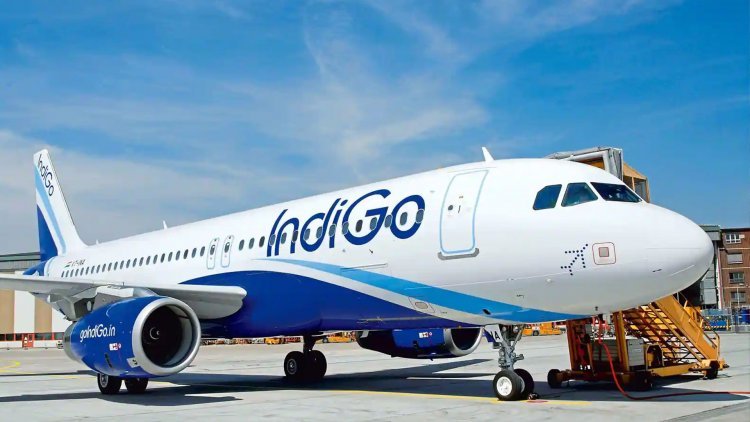IndiGo turns 16; the nation's largest airline is still a fierce rival
Since 2006, IndiGo has battled competitors flight by flight, sector by sector, and slot by slot. It is now even simpler to do it than it was in the past when the number of planes approaches 300.

IndiGo is frequently praised for keeping a close eye on expenses. The airline has consistently maintained that it doesn't dump capacity and instead expands where it finds opportunity when unleashing its scale to compete with rivals. This possibility from IndiGo most often resulted in the devastation of the competition.
It was the second half of 2009, Kingfisher Airlines' financial situation wasn't great, and IndiGo was bringing in an aircraft every three months rather than every month. One of the three popular flights between Delhi and Kolkata operated by Kingfisher Airlines was cancelled. In a matter of days, IndiGo filled the gap. Additionally, the airline began snatching up lucrative night parking spaces whenever Kingfisher left them open.
AirAsia India made a splash when it launched in India in 2014. Through the addition of nonstop flights on previously one-stop trips, the new airline attempted to redefine the industry. This included travel from Bengaluru to Chandigarh. IndiGo immediately entered the market and increased capacity on the routes connecting Bengaluru with Kochi and Goa. Even after AirAsia left the Bengaluru-Kochi route, the two airlines continued their game of one-upmanship.
Cut to 2022. Beginning operations next week is Akasa Air. The airline announced its initial departures from Bengaluru and Mumbai. Its puzzling decision was to take the Mumbai-Ahmedabad and Bengaluru-Kochi routes. The answer? Within hours of the route announcement, IndiGo has increased frequency between Mumbai and Ahmedabad and added one extra flight between Bengaluru and Kochi.
One constant has been trying everything in its power to corner the competition from 2009 to 2014 and now 2022. Since 2006, IndiGo has battled competitors flight by flight, sector by sector, and slot by slot. It is now even simpler to accomplish it than it was in the past when the number of planes approaches 300!
It pursued more than just low-cost carriers. The opening of Port Blair as its new station with flights beginning on September 30 was announced by Vistara on June 23, 2016. Two days before Vistara's inaugural flight to Port Blair, IndiGo began service on September 28. Only lines covered by the Regional Connectivity Scheme, where fares and frequencies are required by law, have remained exempt.
In its 16-year history, the airline has advanced from being aspirational to even adventurous. It has paid particular attention to two things: competitiveness, and fleet replacement. Even if fleet replacement has been a continuous process—the first A320neo was returned to the lessor, and the entire A320ceo fleet is anticipated to be replaced in another two quarters—facing off against the competition is unpredictable and not entirely within an airline's control.
Competition chasing: how and why?
With its unique position, IndiGo can compete. For airlines, it is far simpler to open a location close to the competitors than it is for industries like retail or hospitality, where it can take time.
The first thing on the agenda, increasing capacity, has been completed as IndiGo battles Akasa Air. What follows? reducing prices, which has already been done. What has changed recently? The government-mandated rate caps prevent airlines from lowering prices for a period of 15 rolling days, so the cheaper fares become accessible from the 16th day onwards, as opposed to the past when fares went so low that taking the bus was actually more expensive!
But how does IndiGo handle it? In May, the airline flew 1,466 times each day on average. It may affect the revenue for two or three of the airline's flights when it lowers fares for flights that operate while rival airlines operate their flights. It will still only involve a few sectors and a maximum of 10 flights. Accordingly, 0.68 percent of its total flights would be affected by low fares. However, it can indicate that every single flight in the just launched competition is under pressure! Something that AirAsia India experienced from the very beginning of operations.
Any airline the scale of IndiGo's ultimate goal worldwide is to drive out rivals and force them to leave certain markets so that the airline can raise its prices and continue to turn a profit.
Headwinds?
Airport slot positions have rapidly changed. Airports might not have as much extra space to add flights from IndiGo that would match the schedules of rival airlines. By increasing capacity on metro routes, the airline will also need to increase its flights to the northeast and Jammu and Kashmir in order to comply with the required Route Dispersal Guidelines.
Employees have also been the target of the airline. A number of things are presumably evident on the ground, including firing certain groups of employees and compensation concerns. The renowned On Time Performance is no longer a topic of conversation. Has the Ground Force lost its enthusiasm? Can the airline maintain its sense of unity and display the same zeal for its competitors as its backroom lads do? When Jet Airways was about this age, it began to go off course. It had a difficult time recovering from the 2008 economic downturn. What will happen with IndiGo?




 admin
admin 




















